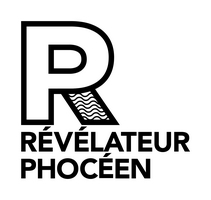Presentation
In 1987 I arrived in Marseille, where I knew next to nothing about 'the Mediterranean horizon'. It was a radical shift in my perception of the world. After a period of instability and questioning, I began a work on the Marseille coastline, which produced hazy, grey images and a desire in me to flee a certain type of reality. A few years later, I joined the organisation Sud Image Terrirotoire where I took up 'a new geography': the landscape and its territory, its transformation and evolution, as well as the alternation of 'Landscapes and Humans'. I am always very sensitive to the question of man's place in these spaces. I try to keep a measured distance and an approach to the real in order to show tension and emptiness and to see loss. For me, photography is a way of thinking, of living and of questioning oneself.
Public collections
? Château d'eau Hôtel de ville Castanet-Tolosan
? Artothèque d'Angers
? Arthotèque d'Annecy
? Artothèque de la Roche sur Yon
? Archives Municipales de la Ville de Marseille
? Fonds communal, Marseille : 17 photographies n&b 30x30cm, commande sur le chantier du Grand Littoral
? Fonds communal, Marseille : acquisition de 5 formats couleur 1x1m sur le chantier de la Seita
? CMP Bastia, 2 photographies n&b, 18x18 cm
? CMP Bastia, collection contrat de ville, commissariat Marcel Fortini : 12 photographies couleur 50x50 cm
? CMP Bastia, Le littoral vu de la mer, 42 tirages n&b, format 46x46 cm
? Musée International du Parfum Grasse
? Maison de l'Architecture et de la Ville de Marseille
? Galerie du Chateau d'eau, Toulouse
? Galerie Van Kranendonk La Haye, Pays-Bas
? Galerie du Théâtre de la Passerelle, Gap
? Galerie Valérie Bach, Bruxelles
? Musée de Pont-Aven
? Le Lieu, Lorient
? Ville de Quimperlé, Novembre photographique
? Les Imagiques, Langon
? Centre des Arts Visuels, Coimbra, Portugal : 12 photographies couleur 70x70 cm
Press
Texts
STATEMENT
Those immense commercial zones on the periphery of cities, which have emerged since the 1970s, conforming to a model that came from the United States. However strong might be the identities of New York, Coimbra, Bastia, Genoa, Plan de Campagne or even Berlin, these cities nevertheless have ceded part of their uniqueness to this periurban standardization. Once having franchised the city limits of these cities, the architecture takes on a new dimension in which the fake, the temporary, the knockdown take the upper hand. Vast spaces destined to accommodate the crowds, florid immensities, an artificial world devised for the comfort of the consumer? some concepts that are all articulated around seduction, but which can also give rise to an uneasiness, a solitude. And it?s just therein the force of André Mérian?s work: to destabilize us. The incursion of the photographer, his shots taken very near the ground, his viewpoint from a distance overwhelm our perception of these familiar territories. The plastic art approach of the photographer is in itself also disturbing and interrogates us about this space that is becoming universal and about the lot reserved for man in this esthetic of chaos.
SYRIA
Contemporary landscape photography, in the heritage of Walker Evans followed by the conceptual artists, is fascinated by outlying zones encircling the major metropolises and becoming the theater of contemporary urbanization. Commercial centers, parking lots, dormitory neighborhoods, road complexes intermingle and finally constitute limited spaces where are superimposed, are lost and dissolved all differentiated endeavors in architecture or in urbanism. These territories, these ?non places? as they are at times called unjustly, are often identical, or at least are elaborated within an architectural vocabulary and urban network infinitely declined, without perceptible variations, in all regions, in all countries, around all the cities of the definitively globalized world. Phenomena more than just models for development, these urban spaces with endless terminologies such as ?active cities?, ?commercial zones?, ?activity zones?, ?new cities?, in the end fascinate the photographers who free themselves from all form of allegory by convoking with a cold lucidity the indisputable material of revelation of the ?place without quality? to paraphrase Robert Musil. In reality these urban landscape images have no subject, no particular motif on which could be based complementary constitutive elements of a representation. They are through the suspension of any meaning, the lucid account of disenchantment as the accomplished form of the critic. The photography of the peripheries, of abandoned places, has considerably developed since the end of the 1970s?industrial archeology with the Bechers, then urban derivatives with their students of the New German Objectivity, prefabricated houses and standardized habitats with Lewis Baltz or Dan Graham, shifted landscapes with Robert Adams, dehumanized with Gabriele Basilico or more recently even with Xavier Ribas or Jordi Bernado who attempt with their experiments of landscape a renewal of the reporting tradition. This photography incarnates essentially with its sociological and psychological preoccupations, sort of a reinvention where the longing for an objective document and the feeling of a melancholy that has for a long time been masked by an anti-estheticism. The work of André Mérian is to be found indisputably within this sphere of influence. Catalogue of places which are never motifs nor pretexts but which exist all the same in the sole tension updated by the artist?s exercise; tension between places in nature and their irremediable transformation, tension also between the constructed space becoming improbable spaces of various uses. From this dialectical situation no lecture emerges, no critique, no denunciation, because the images within the evidence if the plastic art exercise impose the neutrality on the surface while letting others construct a lecture. This neutrality is no longer only that of unknown places resented in an undifferentiated way, it becomes especially that of the photographer who in the repetition of images dislocates the very idea of the document.
Bernard Millet ? Exhibition curator June 2009
LAND
To begin with, a protocol of obvious banality: demonstrate the point at which the city becomes countryside in the Netherlands. Many are the artists and photographers who continually turn over this theme, striving to find the articulations between old and new, between a relationship of the place, still tied to the long history of the Occident, and a conception of territories, more influenced by flux or movement than by styles of living. However this apparent simplicity of the stated aim, this false evidence turns out to be artificial as soon as one examines attentively the body of work in the image, discovering in so doing a project that goes way beyond its subject, deviating from what it shows to interrogate along the way one of the major things at stake in contemporary photography: the document. We know today, how much the document, especially if it?s matter of an image, is in essence impure, unstable, subject to all sorts of interpretations, all sorts of doubts. Of course, this problem of representation is precipitated by the sudden emergence of the digital, a technology that makes not just the image but even visuals that can always be manipulated. The requiem that thinkers or photographers compose is based on the same lament: photography no longer offers that reassuring possibility of eyewitness to the world since the image such as it is conveyed by the media, by the cultural industry and by the networks of the web seems more and more to take to pieces the real, effacing at the same time the strict demarcation with fiction. Constantly in mutation, constantly in search of the spectacular, incessantly aimed at entertaining us, at captivating us, the contemporary image would be no more than a shadow or ghost of reality. Hubert Damisch, Jacques Rancière and even Jean-Paul Curnier have tried these past years ? with an undeniable theoretical success ? to answer this interrogation that is unceasingly renewed since that moment in the 1930s when Walter Benjamin had clearly separated the work of art from its aura. (...) For André Mérian, the European territory is essentially urban, marked by signs of a city that doesn?t know how to define itself between the density of its history and the imperatives of its development. His interest in these mutations isn?t something recent. Several years ago he felt the need to inventory the territorial margins of his country, the south of France. As so many others, he had observed the slow drifting away of those countryside landscapes bordered by several picturesque villages or cities. A wave of construction immediately after the war was followed a relentless further destruction of the landscape by anarchic suburbs and commercial zones. Without nostalgia, without even the will to cynically denunciate, he had observed the phenomenon, noting the emergence of a singular urban beauty?for he was oscillating between a pastiche of architectural traditions and the will to inscribe a cheap modernity between the folds of the terrain and the exit ramps of throughways.
Damien Sausset Extract of the catalogue?s preface
Exhibitions
Les coups de coeur de l'équipe
Group show
June 20 - July 27 2019
Soon Art Fair
Group show
11 - 13 December 2015
Soon Art Fair
Group show
11 - 14 December 2014
Jérusalem, Izmir, Alger
Group show
September 11 - October 12 2013
Ouest
January 19 - February 23 2013
Land
March 27 - May 29 2009
Collectif
Luc Boegly,
Olivier Nord,
Deidi Von Schawen
June 21 - July 27 2007
News
Sounds of Silence
6 - 12 September 2020
Photographie et documents, 1983-2018
Paul Pouvreau
October 12, 2019 - January 5 2020
Réinventer Calais
October 5 - December 22 2019
Retour à Roissy. Un voyage sur le RER B
April 30, 2019
Autres paysages
February 21 - March 29 2019
Objets
January 29 - March 22 2019
Images d'une collection
September 13 - October 30 2018
Never Mind
April 5 - June 24 2018
Pictures/City
14 - 14 March 2018
Regards Urbains
November 30, 2017 - January 19 2018
Paysages français Une aventure photographique (1984 - 2017)
Stéphane Couturier,
Aymeric Fouquez,
Thierry Girard,
Jacqueline Salmon
October 24, 2017 - February 4 2018
En bas de chez moi
October 6 - November 4 2017
Land
June 10, 2010




